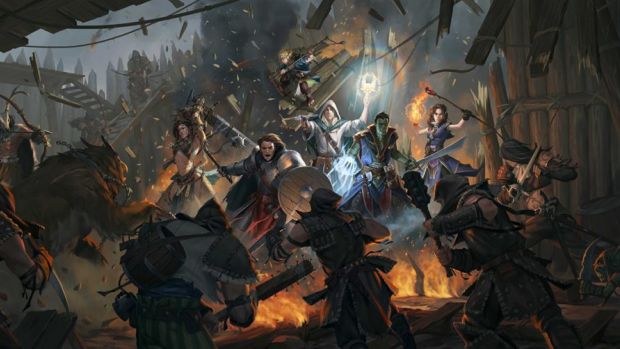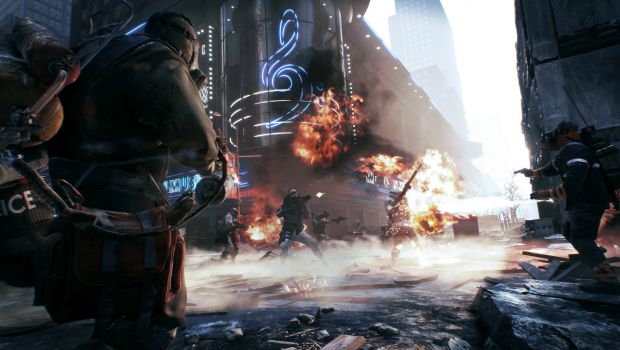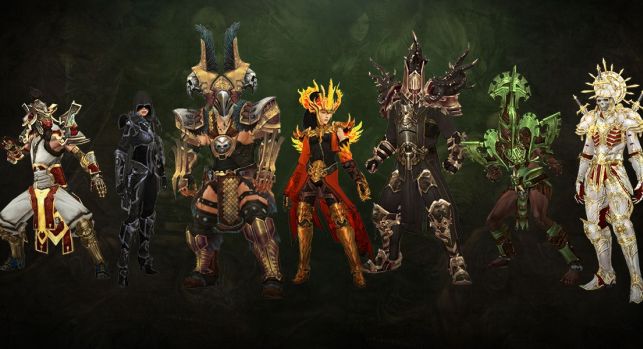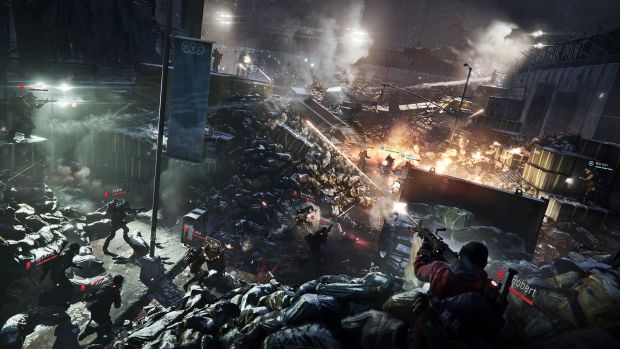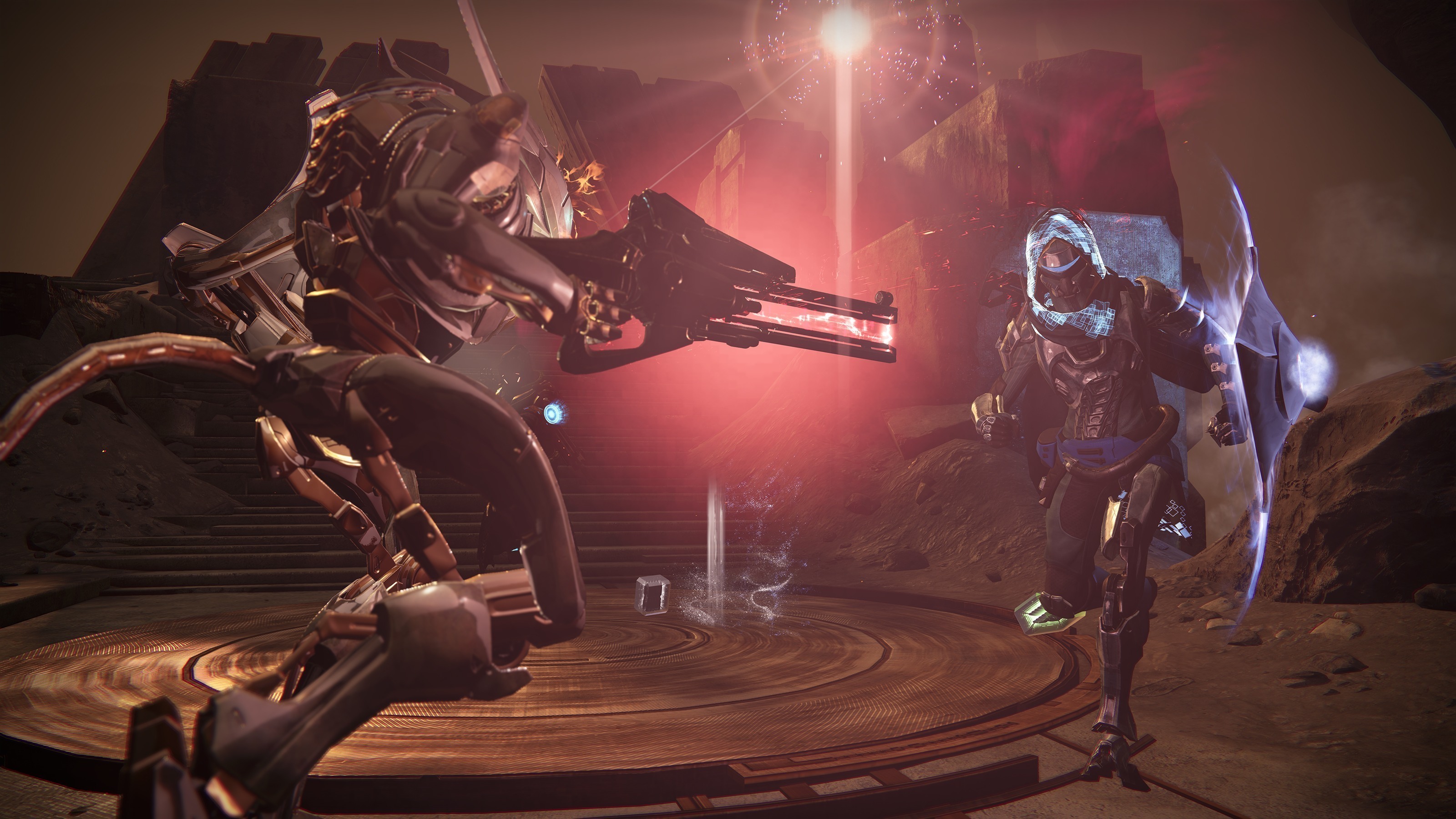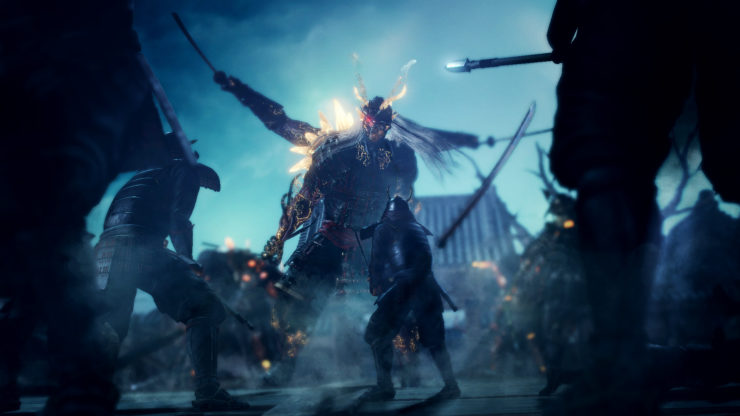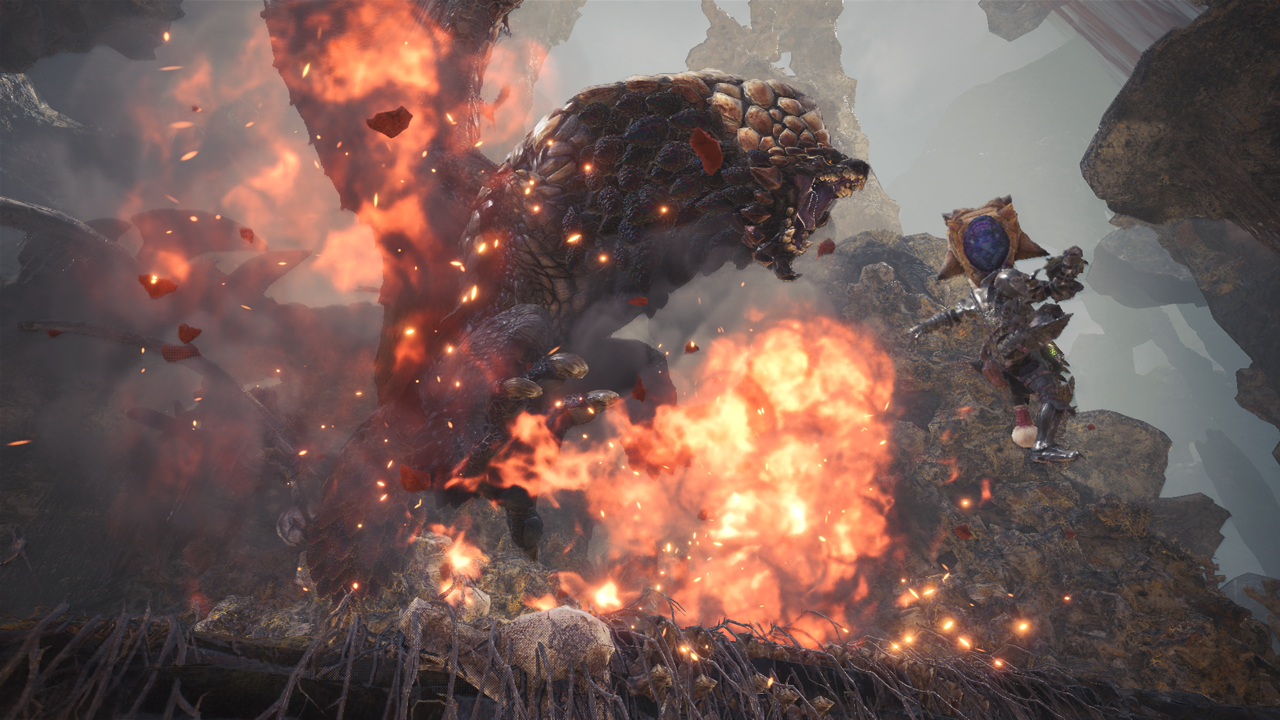
Of the many games that I’ve played over the past few years, loot games have always been a big weakness. I never really experienced Diablo 2, Nox, Dungeon Siege or any of those classics. Borderlands 1 and 2 were the major looter experiences for me but when the bug of loot rarities, min-maxing and grinding finally bit, there was no return.
Diablo 3: Reaper of Souls was my first real addiction, from hitting max levels to ascending the Torment scale and grinding out Greater Rifts. The feedback from combat was excellent and it was simply enjoyable to tear through the competition. Both of these fed into the urge to become even stronger. Imagine how it felt to finally discover Legendary Gems and Gear Sets, which were there for a while but I had failed to properly notice, like the noob I was.
"Path of Exile with its endless customization options and sheer range of content, what with different Leagues and overpowered Ascendancies calling to me, was something else."
Since then, a number of games really scratched that looter itch. Path of Exile with its endless customization options and sheer range of content, what with different Leagues and overpowered Ascendancies calling to me, was something else. At times, it felt like powerful loot didn’t really drop on a consistent basis in the beginning. The connection issues were also fairly annoying. Ancestral Call + Frost Blades + Multistrike helped alleviate those pains as enemies fell left and right while tougher Elites and bosses required a bit more strategy. Regardless, the potential for a long-term grind became obvious even as connection issues ultimately forced me to quit.
There have been other recent releases that helped though. Grim Dawn, Nioh, Warframe, Monster Hunter World, Tom Clancy’s The Division and even Divinity: Original Sin 2 pushed me further down the loot grind rabbit hole. All of these games differed in a number of ways like the ability to obtain desired with Warframe’s Platinum and trading system (balanced by the fact that you could farm and trade items, thus never spending any real money. This could help one properly plan and obtain builds they wanted…if the price from other players felt right.
Digital Extremes’ constant updates with balance and new content helped keep things reasonably fresh as well. Of course, the game’s focus on crafting, properly modding your weapon and Formaing it for optimal mod usage (since matching mods with their respective polarities would halve the energy required, thus allowing for higher level mods to be equipped) provided even more control to one’s progression. The game’s free to play nature offset the focus on simply earning each and every Warframe, weapon or powerful mod through sheer grinding.
Divinity: Original Sin 2 didn’t really allow you to upgrade gear or weapons past their current level, thus forcing certain stats and perks on numerically better weapons. There was still a grind to steal and scavenge for more gold while Lucky Charm unearthed some worthwhile goodies in random containers and chests. Augmenting your character until you were decked out in the best Uniques, Legendaries and Divines wasn’t the goal of the game and it wasn’t difficult to clear even Tactician difficulty without fully optimized gear.
"Well, how much further can I push the build then? Should I farm for more Paragon points? Level up those Legendary Gems and augment them into all my pieces?"
That being said, the grind wasn’t really punishing or forceful – just there, ready for the taking, provided you had enough coin. Crafting wasn’t really all that special and if you couldn’t afford some equipment, there was at least some hope that the next big encounter would drop something worthy. On the surface, Divinity: Original Sin 2 wasn’t really a looter action RPG but it could be played that way for sure.
Tom Clancy’s The Division mixed generous loot drops with caches, currency grinds, Elite farming, World Boss killing, Global Events and whatnot to provide one of the more intrinsically addictive games out there. Even new gameplay features like the Optimization Station allowed players to properly raise the Gear Score on their favourite equipment as opposed to running out and re-grinding for everything again. Of course, this had – you guessed it – a Division Tech grind associated with it.
I could go on and on but the point is that each one of these games has a looting aspect that appealed to me. The term “Skinner Box” has often been applied and it works in a fairly simple manner – kill stuff, get better loot so you can kill stronger stuff, acquire even better loot, repeat. Of course, players don’t just want the same stuff to kill things with. They also want different play-styles, unique items and elements that introduce variety to the looting process. By providing variety and different challenges, games prevent us from becoming too numb to the Skinner Box’s rewards.
Over the years, however, I’ve started hitting a very interesting wall with regards to looter games. Let’s take Diablo 3 for example. My Paragon Level 600+ Demon Hunter with her Shadow Impale build is pretty awesome. I’ve almost obtained a full set of Ancient items with a few Legendary Gem Augments, thus further increasing her toughness and damage output. Everything is so perfectly slotted together. However, I can’t quite progress past Greater Rift level 100. Well, how much further can I push the build then? Should I farm for more Paragon points? Level up those Legendary Gems and augment them into all my pieces? Farm for better gear, re-roll stats to push min-maxing to its limit, pursue Primal Ancients or simply throw in the towel and go for an S-tier meta build which carries its own grind?
"Loot in general is also in a confusing place – there aren’t any sets that outright break the game (even the vaunted Striker’s Battlegear has seen numerous nerfs)."
The issue isn’t that I haven’t gotten more powerful. It’s more that the loot progression feels more like walking through molasses than actually obtaining significant upgrades. I may be getting stronger but it’s not at a faster rate than my enemies, particularly in content that endlessly scales. Thus a lot of time is spent just to ensure I’m competing with them. However, that is the very basis of min-maxing, to be honest. Those small increases in percentage are more akin to polishing all the rough edges as opposed to making earth-shattering increases in power. In those circumstances, it’s the satisfying gameplay that keeps players coming back.
Such a phenomenon isn’t limited to games like Diablo 3 and The Division – hitting that certain “wall” can happen in just about any looter. Over time, the high that players receive from getting powerful loot becomes more and more diminished. This is because over time, the boosts in power feel more and more negligible. Many look at this as having everything you could possibly want. So it’s probably time to start a new character class and push for some other build. After all, the gameplay experience is pretty much complete. There’s no where to go from here.
Now let’s look at The Division. There’s been a greater move towards tactical cover-based shooting over the past year. Loot in general is also in a confusing place – there aren’t any sets that outright break the game (even the vaunted Striker’s Battlegear has seen numerous nerfs). However, there are a number of underwhelming sets in the game like FireCrest, AlphaBridge, Tactician’s Authority, etc.
It’s not that they’re outright bad or useless but The Division definitely wants to be both a cover-based third person shooter and action RPG. The gameplay is satisfying, for sure, but that “cap” on one’s power still comes into play. Here’s the irony – you’ll never feel powerful enough to rely mostly on reflexive skill when taking down enemies. Conversely, even when focusing on the RPG elements, there are no builds that feel like they outright break the PvE experience at the higher World Tiers (most likely due to PvP balance).
"So to recap – after a point, there’s a very slow, heavily drawn out decrease in progression in both looters near the end-game. Varying play-styles and having different builds helps alleviate this."
Though there are no Greater Rift levels, playing Endless Resistance at World Tier 5 is probably the best test to see how far your build can go. The problem is that the rewards aren’t even worth it all that much. Besides, everyone just goes and farms Lexington anyway, especially when Global Events roll around. These fuels a content problem as well. With one character and a limited set of skills, what new gameplay experience will you find by simply switching builds? The effective grind remains the same and is only reinforced when the game’s live elements take over.
In the case of Diablo 3, even with how satisfying the gameplay can be, there’s also an issue with worthwhile content. Why complete Bounties and random Adventure quests or replay the campaign if the best rewards come from Greater Rifts? Forget Challenge Rifts or Set Dungeons – why not just keep farming Greater Rifts for Death’s Breaths, Blood Shards and loot drops? Even the normal Rifts are great for loot that can be dismantled into materials. But then it’s not quite the case where having the highest stats guarantees success since the composition of Greater Rifts can affect your chances as well.
So to recap – after a point, there’s a very slow, heavily drawn out decrease in progression in both looters near the end-game. Varying play-styles and having different builds helps alleviate this. However, they’re both somewhat screwed on the more fundamental issues. The Division relies more on situational awareness and properly creating a build – for a tactical cover-based shooter, your killing potential depends on your stats and the health of enemies (dictated by World Tier).
You can only grind so much before you stop getting stronger and the range of content itself is fairly limited at end-game. Diablo 3 also requires you to properly create and optimize a build, playing it with some matter of dexterity, but Rift composition is completely out of your control. Which is tough beans because that’s the most optimal content for getting more power. That same power, by the way, is doled out in a slower fashion the longer you play.
"Look at Destiny – the loot grind in Year 2 and 3 of the first game was more about completing tougher quests. Even if you were forced to grind out certain activities like raids, their gameplay was more intricate than your average Greater Rift run."
I guess what I’m getting at is whether the current Skinner Box model in looter games is sustainable over a very long period of time. Once you get past that point where the stat increases, levels, gear and whatnot don’t feel substantial enough to keep up with ever-increasing end-game challenges, the jig is up. You realize that you’ve effectively “beaten” the game. It becomes very hard to go back to certain looter games from that point on (or even peruse new ones). The grind just doesn’t feel as satisfying, even if it’s on a different character; the sense of reward just isn’t the same as the first time. The fact that the content doesn’t really change or there’s no viable end-game beyond a few activities also hurts.
Though I believe the gameplay in both titles has a role to play in the eventual withdrawal from end-game, there might be a few solutions. Instead of focusing on a set number of activities or just one facet of the end-game, why not give players memorable missions instead? Look at Destiny – the loot grind in Year 2 and 3 of the first game was more about completing tougher quests. Even if you were forced to grind out certain activities like raids, their gameplay was more intricate than your average Greater Rift run. Different strokes for different folks, of course, but I do remember soloing the Templar in Vault of Glass till this day.
Sure, you had to grind out materials as well (Exotic Sword Quests. Never forget) but there were also tough missions that were interesting in their own right. Weapons like Touch of Malice exposed you to the deeper lore inherent in The Taken King while providing a treasure hunt for all the Calcified Fragments. Black Spindle was a secret mission that, once exposed, turned into a time attack challenge against overwhelming enemies. Outbreak Prime is a whole other complex quest that’s the perfect combination of community collaboration and raid group teamwork. For all the flak the game received for its RNG, lame storylines and lack of ambition, it felt good to have these defined routes to memorable weapons.
Of course, looter fans would want more nuanced stats and gear that’s within their realm of control, either by constant grinding or enchanting/optimizing. So why not go the route of Nioh which guaranteed weapons like Raikiri through completing various missions? It also allowed infusion of weapons to make them higher level from the very beginning, thus letting players choose what they want to stick with while challenging them to max out Familiarity with a weapon once again to get the most of it.
"It’s also probably to Nioh’s credit that it establishes these things right out of the gate – that there are plenty of different play-styles which can trivialize the opposition but you’d do best not to underestimate enemies."
Players also receive Smithing Texts to craft their own version of Raikiri and other weapons should they want different rolls. Perhaps the best part is that success depends on understanding which weapon and stance is best for which situation, how to properly fight certain enemies and so on. Having great gear won’t make every mission a cakewalk (enemies like the hulking Yokai henchmen can take you out with a few swipes, for example) but taking advantage of your gear’s benefits and different weapon effects certainly makes a difference.
It’s also probably to Nioh’s credit that it establishes these things right out of the gate – that there are plenty of different play-styles which can trivialize the opposition but you’d do best not to underestimate enemies. They are not entities bested by simple stat differences (unless you’re overwhelmingly more powerful than them). The tougher Twilight missions also provide players with more incentive for testing out their builds and earning even greater rewards. That’s not even taking into account the various New Game Plus modes which introduce new loot tiers and tougher enemies for players to grind for.
Then there’s Monster Hunter World. Much like Nioh, success depends on understanding your enemies, the Monsters and weapons. The key gameplay loop and style of progression lies in mastering a weapon and then a particular monster at greater difficulties. Ensuring your gear – which ties directly into your success along with actual skill – is up to par is also important. The game’s focus is on crafting materials and constantly powering up your gear. The resource grind becomes much more hectic in the end-game as the min-maxing really starts to come into play.
However, circumstances can still be salvaged with one’s individual skill (and knowing which weapons works for which situation). Your understanding of game mechanics like Elderseal, Flash Pods, Canteen meals and properly timing attacks is what carries you. It also doesn’t hurt that the game is layered in such a way that there’s no clear split between the normal game and end-game. Everything you’re doing, from low rank to high rank hunts forms the basis of the game.
"Maybe I’m being a little too hard on the above games feeling slow with their progression after such a long period of time on the market."
Once again, it’s not perfect. The end-game devolves into farming Tempered Investigations for Stream Stones and Decorations. Not all monsters have a Tempered form and those that do feel unevenly distributed, some popping up more than others. There’s also the fact that even if some monsters were made Tempered, what benefits do their gear sets really have for some people? I do feel that Monster Hunter World at least provides incredibly different ways to play thanks to the nuanced weapons system, dynamic nature of battles and the sheer range of things to do. There are so many different ways to approach different encounters, various mixes of monsters to combat within certain investigations and challenges to pursue.
However, Capcom needs to expand the scope of its end-game more to ensure that progression doesn’t become too stagnated. Perhaps when G-Rank is introduced that may happen but for now, it’s the upcoming Spring Blossom Fest, new monsters like Deviljho and so on that are doing it. If transmog was introduced, then players could farm different monsters and pursue a fashion end-game. Also, as a side note, the commitment to mastering certain weapon types along with the range of content prior to Tempered Investigations ensures you’ll have some variety on the next planned build. That’s without replaying the whole game as well.
Maybe I’m being a little too hard on the above games feeling slow with their progression after such a long period of time on the market. After all, Diablo 3, Tom Clancy’s The Division, various Monster Hunter titles and so on have provided hundreds, if not thousands of hours of fun for players around the world. However, I think it’s important to examine the Skinner Box loot grind, as seen in titles like Diablo 3 and The Division, and how it can be mixed up, if not improved.
Some may look upon games like Nioh or Monster Hunter World as Dark Souls-esque games with little more than difficulty curves that demand loot to properly keep pace with the challenge inherent. They’re not entirely wrong. But when the loot synergizes with combat rather than acting as a crutch or overtaking it, combined with memorable gameplay instances and a solid feedback loop, even if we risk trading long-term eventual stagnation for a shorter-term satisfying looter, the end result may be a uniquely valuable experience overall.
Note: The views expressed in this article are those of the author and do not necessarily represent the views of, and should not be attributed to GamingBolt as an organization.








